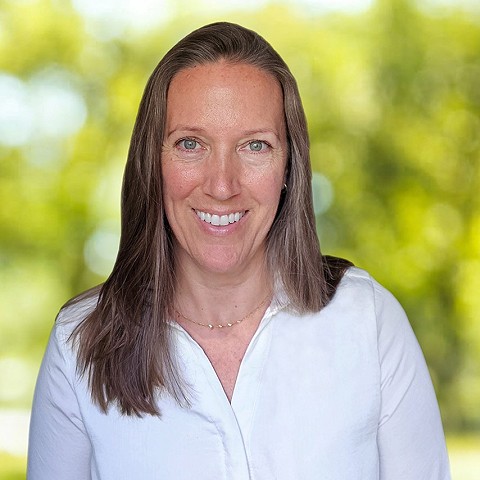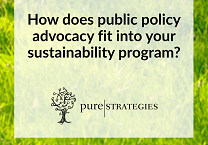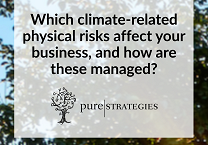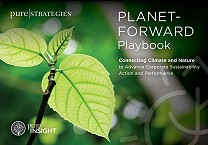3 Key Things to Understand About Soil Health
by Cheryl Baldwin, PH.D.
03 May 2018
Half of the soil on our U.S. farmland is gone. Conventional agricultural practices and conversion of land to cropland caused this devastating loss. The good news is that the rate of soil erosion has declined, with an even brighter path ahead.
The reason to share optimism about soil’s future is that there is a concerted and growing effort to improve our land’s soil health. The U.S. Department of Agriculture spurred this shift with financial incentives for farmers through the Conservation Stewardship Program and Environmental Quality Incentives Program, among others, which require them to reduce soil loss on erosion-prone land and protect wetlands.
Yet, there is even greater momentum building: Along with farmers, diverse stakeholders are engaging in soil health, from researchers to brands. Their shared vision is that by using already accessible best practices on the field, the soil can regain its biological activity, composition and structure to sustain plants, animals and humans — and regenerate soil health.
Field-level soil-health management systems include a combination of practices. Key among them are conservation tillage, cover crops, conservation crop rotations, and other practices such as organic soil amendments and adaptive nutrient and pest management. Leveraging a number of these practices can deliver synergist effects in a positive feedback loop across the supply chain, providing important environmental, social and economic outcomes.
1. Healthy soil is a carbon and water sponge
Soil health best practices minimize surface disruption (e.g., less tilling or no tilling), keep the soil covered as much as possible (e.g., cover crops) to limit erosion, and provide plant diversity (e.g., cover crops and crop rotations) to naturally feed the soil and support greater biological diversity below the ground.
These actions protect the soil from erosion and build soil organic matter, or carbon. Conventional production practices typically disturb the soil so that carbon is rapidly broken down by organisms underground and released into the atmosphere or lost from wind or water erosion. Soil health best practices, on the other hand, help retain the carbon and accumulate it over time.
Does this mean that soil is a carbon sink? Soil is already the largest terrestrial carbon pool and soil health practices can add to it. The Nature Conservancy estimates that widespread adoption of soil health practices can mitigate 25 million metric tons, or 5 million passenger cars, of carbon each year. Companies are beginning to leverage voluntary carbon trading and targeted programs in their own supply chains, such as insetting, to support such progress and lasting changes.
Increasing the soil organic carbon content has additional benefits, including increasing soil’s water-holding capacity. The Soil Health Institute estimates that one percent more soil organic carbon can deliver 2-5 percent more water reserves, equal to the top six inches of soil being able to hold 2,500 to 12,000 gallons of water per acre. With this added ability to hold moisture in the soil, fields can withstand the increased occurrence of droughts and extreme storms, instead of soil being carried away.
2. Soil health is connected to our health
At the most basic level, soil health is a food security issue. At least 95 percent of our calorie consumption is derived from soil. Thus, soil productivity is critical to feed our growing population. The FAO points out that agricultural production must increase 60 percent globally in the coming years and that sustainable soil management could produce up to 58 percent more food. However, the connection between the health of the soil and our health runs even deeper.
Soils are natural filters that remove water contaminants. From diseases that threaten human health to chemical pollution, the effectiveness of soil to function as a water purifier is highly dependent on its health. Cover crops reduce nitrate loss in fields by 70 percent, helping to minimize algal blooms and associated dead zones in waterways and drinking water contamination. Soil health practices also help reduce most soil-borne diseases by 20 to 80 percent.
The nutrients that help a plant grow are necessary for humans and animal health. Plants grown on nutrient-deficient soils deliver inadequate nutritional quality to those consuming it — contributing to nutrient deficiencies. Building soil organic matter and overall soil health have the potential to enhance the availability of these nutrients to the growing plants and ultimately to those consuming them.
3. Soil health = economic health
Economic contributions of soil health are notable. Beyond the human health and environmental services discussed, thriving soils can bring greater yields and resilience with reduced input costs to producers.
Crop yields tend to be less variable with higher soil organic matter content. Improved soil composition, structure and biological activity from soil health practices can also help boost yields over time. For example, cover crops deliver a 4-5 percent higher yield in cotton. Further, product quality can be enhanced, from food crop nutrient composition to fiber crop strength. Added to this, input costs can be reduced with less water, pest control and tillage. The need for herbicide use diminishes with no-till practices and cover crops can suppress herbicide-resistance weeds, such as Palmer amaranth.
These gains are important to producers as they impact their bottom line, and they also help alleviate leading concerns, such as production costs and weed resistance. The longer-term impacts could support rural vitality and farm/supply continuity.
Soil’s call to action
Soil health is an opportunity to partner across the supply chain for a win-win-win — environmentally, socially and economically. Leading brands such as Wrangler, Annie’s and DanoneWave have taken the call to action and are incorporating soil health into their businesses. Yet preventing erosion and building soil health should be an aim for all brands that rely on thriving farms.
This starts with getting to know each step that separates you from the farm and visiting farms that are growing raw materials for your company. There is a lot to gain from taking the time to learn about the challenges faced at the farm, long-term goals and where soil health fits in. This deeper understanding will help identify ways to work together toward common aims and share in the environmental, social and economic gains that soil health promises.
This article originally appeared in Sustainable Brands on May 03, 2018.
Written by Cheryl Baldwin, PH.D.
Cheryl Baldwin, Ph.D., is a Vice President of Sustainability Consulting for Pure Strategies where she partners with corporate clients to develop and execute sustainability strategies to improve performance across retail, food and agriculture, home and personal care, and cosmetics industries. She also leads the firms’ global market research to generate new insights to accelerate business transformation.
Cheryl’s recent projects include helping build a leading nature strategy for Toyota Motor North America, developing sustainability goals for TAZO, creating a sustainable packaging strategy and implementation tools for Walmart, and advancing a sustainable chemistry program for Sephora. Cheryl also worked with industry groups to support broader impact including, FMI, the food industry association, and the National Retail Federation (NRF).
Cheryl authored Pure Strategies’ market research reports: Planet-Forward Strategies, Connecting to the Farm, Reaching the New Corporate Frontier, Advancing on the Path to Product Sustainability, and other reports. She wrote the book, The 10 Principles of Food Industry Sustainability and is the lead author/editor for two additional books on sustainability, Greening Food and Beverage Services and Sustainability in the Food Industry and holds U.S. and international patents.
Prior to Pure Strategies, Cheryl led the life cycle research and sustainability standard program for the non-profit ecolabel organization Green Seal. Cheryl also worked in Research and Development for Kraft Foods, Inc. where she was involved in all phases of R&D from novel ingredient development to global product commercialization. Cheryl holds a Ph.D. and M.S. from Cornell University and a B.S. from the University of Illinois, all in Food Science.
Cheryl has been named one of the Top 50 Women Leaders of DC for the second consecutive year, based on a methodical review of women executives and leaders across the area. She was identified for her career track record, including her leadership position at Pure Strategies. The recognition came from Women We Admire (WWA), a membership organization of over 1,200 of the most accomplished women leaders in business, law, consulting, education, non-profit and other sectors. based on a methodical review of women executives and leaders across the area. She was identified for her career track record, including her leadership position at Pure Strategies. The recognition came from Women We Admire (WWA), a membership organization of over 1,200 of the most accomplished women leaders in business, law, consulting, education, non-profit and other sectors.












